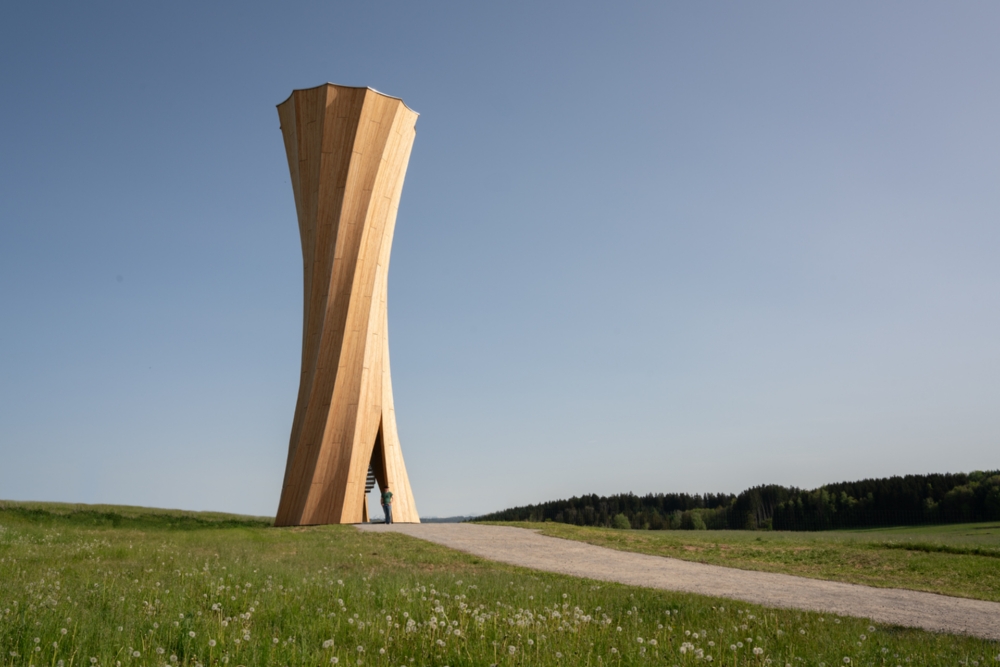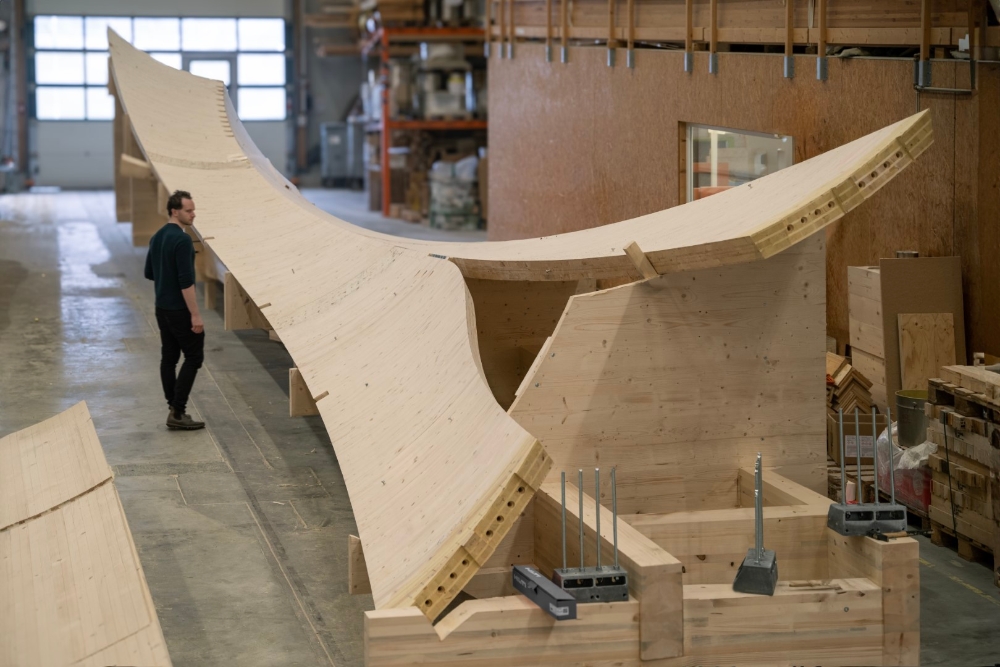
CovSoc founder member, Paul Maddocks, found this interesting feature about the use of traditional materials in non-traditional ways.
Paul said “I like finding out about new interesting students projects, especially in architecture. I noticed this interesting project ‘Self-shaping timber’ structures by the University of Stuttgart, they are renowned for their research into new materials and construction methods.
The project that caught my eye was harnessing the natural shrinking process of timber as it loses moisture to create interesting shapes and producing this world-first self-twisted tower in Germany, the Urbach tower.
The structure is made using a new, non-energy-intensive process that involves predicting how wood will shrink as it dries out. Based on this technique, the flat timber panels are designed to warp into the desired shape. The 14-metre-high Urbach Tower marks the first time that this process has been used in the construction of a building. The method as a way of “programming” wood to take on a specific shape, and say that the timber is in effect “self-shaping”.
“While making this work is relatively simple, predicting the outcome is the real challenge” said Institute for Computational Design Head, Achim Menges. “Being able to do so opens up many new architectural possibilities. A key advantage of self-shaping is that it requires little energy, avoiding the need for the kind of heavy machinery that would usually form these kinds of timber components.”
Their next big project was the Wangen Tower created as an architectural landmark and a pioneering timber structure for the Landesgartenschau 2024 (a large-scale, annual horticultural show which takes place in different regions of Germany).
Set amidst the scenic landscape of the western Allgäu, the Wangen Tower is an architectural landmark and pioneering timber structure. Based on research conducted at the University of Stuttgart, the tower is the very first multi-level, walkable building to use self-shaped, structural timber components. The distinctive expression of the tower’s unique timber structure stand as a testament to the latent design possibilities in naturally renewable, locally sourced, regionally manufactured and resource-effective timber architecture, which can be uncovered through an integrative approach to scientific research, materially-informed computational design, digital fabrication and expert craftsmanship.
You can read about this innovative craftwork on Stuttgart University’s website here or watch a video here.

